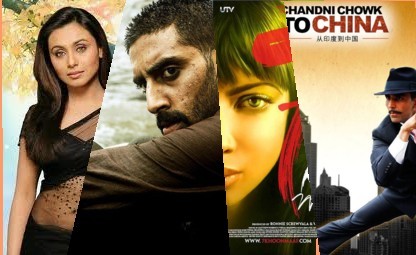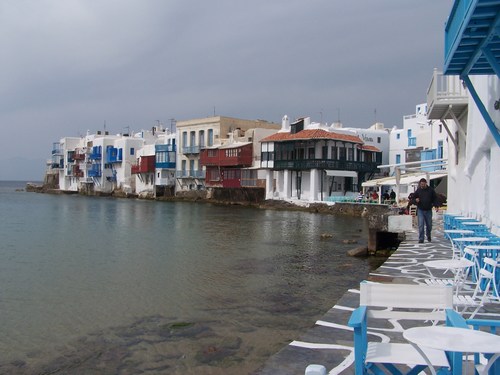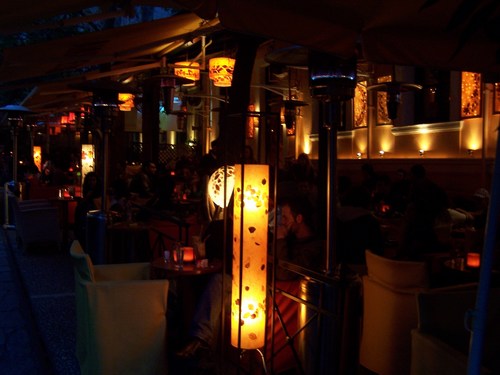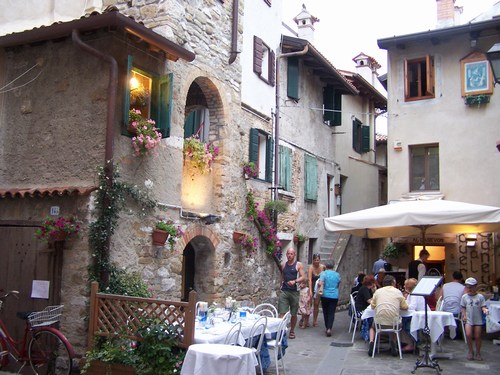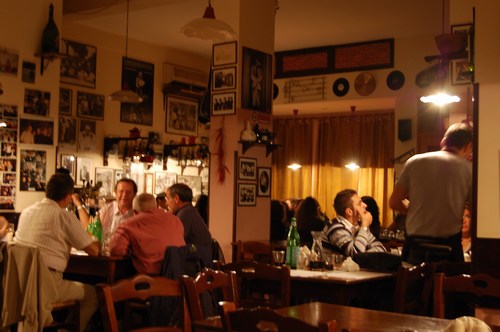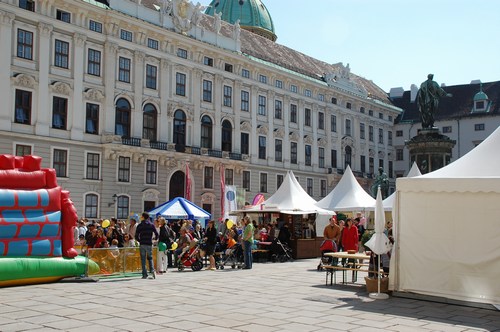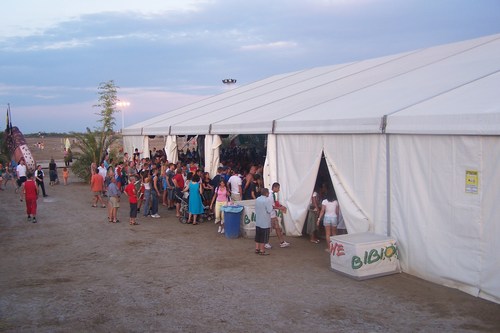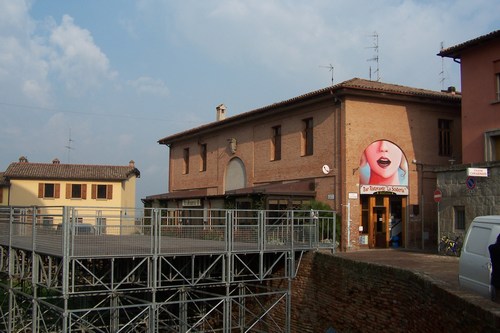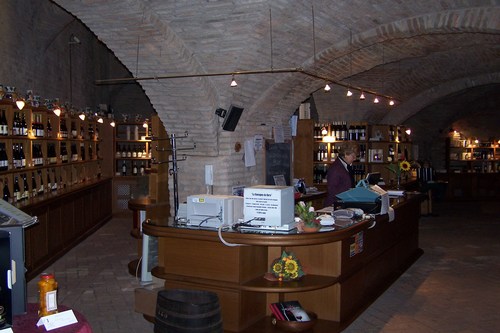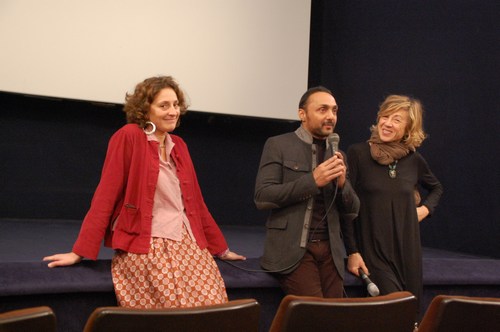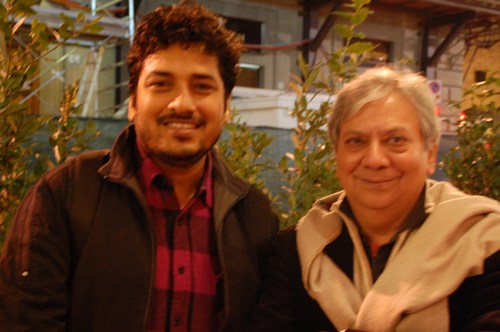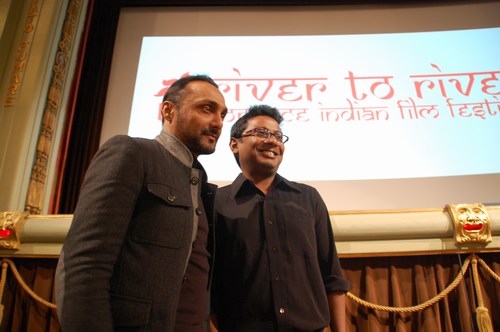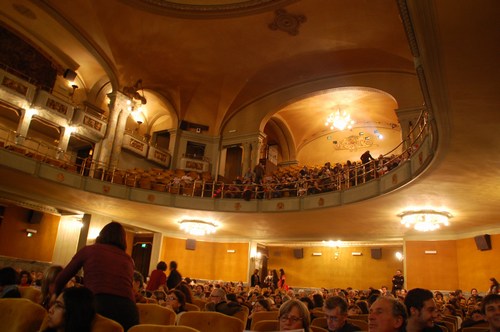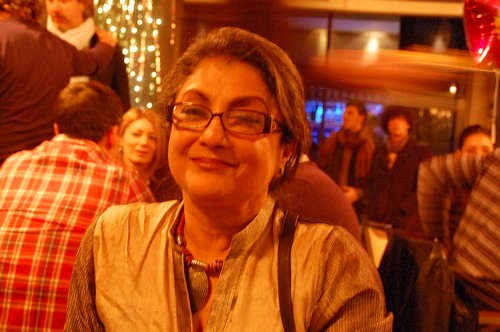The dominent discourse on sexuality is the popular discourse that considers "male-female" sex as "normal" and is often homophobic. Alongside this dominant view of human sexuality, there have been and there are, other ways of looking at "normal" human sexuality, that are often ignored or forgotten today. This article attempts to look some of these differing world views of human sexualities.
Given the article's subject, there are a few explicit sexual references in it. If you feel offended by such words or discussions, perhaps it will be better if you don't read this article any further. (Below one of my images from erotic sculptures of Konark - Orissa, India)
***
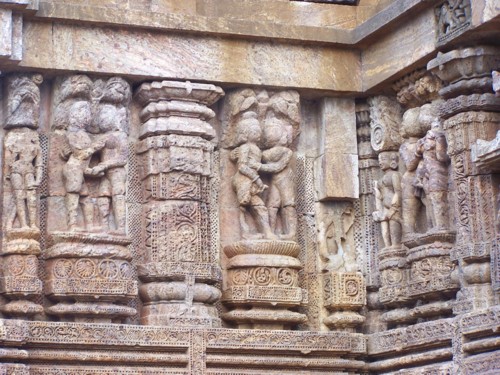
The issue of human sexuality interests me for a long time and I have written many times about it. However, this specific article is result of a reflection following a talk given by Prof. Maria Grazia Maioli in the archeological museum of Bologna (Italy) in February 2011 on the "Lives of women in ancient Greece", that had many references to the ancient Greek view of human sexuality.
However, let me start this discussion with the "scientific" view of sexuality.
Modern or Scientific View of Human Sexuality
Alfred Charles Kinsey is considered the father of modern sexualology. A biologist, born in a devout Christian family, Kinsey started working on human sexuality in the nineteen thirties and produced different reports on human sexuality, including the Kinsey scale for measuring sexuality (from 0 to 6, where "6" is exclusively heretosexual, to "0" which is exclusively homosexual). Apart from the sexual behaviour represented in the Kinsey scale, his reports also touched on pyschological aspects of desires, sexual attraction and fantasy. (Image on left: Kinsey on the cover of Time magazine, 1953 - from Wikipedia)
Kinsey's reports became bestselling books and are supposed to have influenced the "sexual revolution" of 1960s and 1970s, especially in Europe and America. These reports were followed by countless researches and theories, that continue even today.
For example, Nancy Friday conducted research first on female sexual fantasies and then on male sexual fantasies, and wrote different bestselling books about these sexual fantasies including My secret garden (1973), My mother myself (1977) and Men in Love (1980). At that time, most people believed that there no such thing as "female sexual fantasies" and thus such research was important in changing public perceptions about female sexuality.
In an interview, she explained her work on female sexual fantasies, "I chose to write about women's sexual fantasies because the subject was unbroken ground, a missing piece of the puzzle...at a time in history when the world was suddenly curious about sex and women's sexuality. The backdrop was a widespread belief that women do not have sexual fantasies...are by and large destitute of sexual fantasy .. more than any other emotion, guilt determined the story lines of the fantasies in My Secret Garden...women inventing ploys to get past their fear that wanting to reach orgasm made them Bad Girls."
In her book "Men in Love" Friday also talked about "the male rage" provoked by the mother, the object of first love for the baby, who also stops them from touching their genitals and teaches that sex is bad:
Human sexuality in popular cultures
Pupular cultures often reduce the debate on human sexuality to a "normal" heterosexuality of the majority and an "abnormal" or even "perverted" homosexuality of a small minority. Such popular views may be accompanied by laws that consider anything outside the heterosexual sex as being illegal, sometimes even punishable by death.
This popular view of human sexuality in large parts of the world has been influenced by views of sexuality in the Abrahamic religions (Christianity, Islam and Judaism). Through colonialization and cultural dominence of such thinking in the media, such popular views of sexuality are common even in those parts of the world that had their own specific ways of looking at it in the past. For example in the recent past, many Hindu religious leaders came out with statements condemning the decriminalization of homosexual relationships through a Supreme Court judgement, even though Hinduism has different narratives that take a more nuanced view of sexuality.
Sexuality in Abrahamic religions
Among the Abrahamic relgions, sexuality is seen as a moral issue with clear boundries between "natural" and "un-natural". In this view, sex is closely linked to procreation and thus closed between the boundaries of marriage between a man and a woman, where it must not be tempered with by using barriers of condoms or anti-conceptive pills. For example, the following excerpt from an article by Janet Price on a Catholic Education Resource centre website, lays down the basic idea of "God's view of sexuality":
In spite of opposition from conservative Christian groups, most countries in Europe, US, Canada, Australia, do have laws that accept a wider view of human sexuality.
Though conservative Jew groups, based on the traditional Judaism views, have also opposed homosexuality, Isreal also has progressive laws about human sexuality.
On the other hand, the situation of non-heterosexuals continues to be critical in most Islamic countries.
Alternate visions of sexuality
It was at Prof. Maioli's talk on women in ancient Greece that stimulated the reflections on the alternate visions of sexuality among different cultures. So let me initate this part with some of the things she told about sexuality in ancient Greece.
Prof. Maioli illustrated her presentation with some explicit images, mainly from Greek vases, and I am trying to sum the main points of her presentation from my memory.
She started by saying that there are very few women's accounts of their lives in ancient Greece - it could have been that in the past there were more accounts that have not survived to our age. On the other hand, there are images painted on the vases and there are accounts written by men. These accounts paint an account of Greek life before Christianity that is often not well known.
She showed a number of paintings to point out two kinds of women in the Greek paintings - wives and companions. Wives are always painted covered with clothes and placed in homes - sex with the wife is part of husband's duty and her main role is to have children. Companion-women called Etera, were for giving pleasure to men and Prof. Maioli showed images of young women learning to introduce objects in their vaginas to learn how to give sexual pleasure to men.
At the same time, images of nude women from ancient Greece show that artists were not very clear about female anatomy. For example, some vases show women with breasts going in two different directions. Prof. Maioli explained this by saying that artists were probably making these images from their memories and not by directly observing nude female anatomy.
On the other hand, ancient Greek vases are full of nude men, sometimes with erect penises and sometimes engaged in sexual acts. It was a patriarcal society, where men had community life with other men in common or public spaces such as gymns, baths and other community spaces, where wives were not admitted. The "eteras" were admitted in these mainly male spaces.
Images from vases also show that men in ancient Greece introduced their sons to older men and to sexuality in these community spaces. Prof. Maioli showed different images of vases showing young men being masturbated or fucked by older men. There were other images, that showed young men being initiated into sex with older "eteras" also.
The Greek idea of beauty was essentially male nudes, and they were shown with small penises. This is because of their idea that longer the sperm took to come out, the colder and less potent it became. Thus, small penise would mean quicker exit of sperm and thus more virility and potency.
I am not sure if images of vases can be taken as accurate representation of social understanding of human sexuality of ancient Greeks or if it was a representation of life among certain section of Greeks. However, it does introudce a vision of a society that considers bisexuality as the norm, or at least acceptable. I was also wondering if the word "heterosexual" came from the word "eteras" or the women companions.
Obviously many of the things Prof. Maioli explained about ancient Greeks, such as fathers taking their young sons to older men or women for sex, would be today considered as horrifying crimes punishable by laws in almost all countries of the world.
Were such attitudes prevalent only in the past or did they continue to exist in the region till much later? I think that some hints to similar practices do come from the region.
For example, Nobel prize winner Orhan Pamuk in his celebrated and wonderful book, "My name is red" based in medieval Turkey writes repeatedly about a society where men seeking young boys for sex seems to be acceptable social practice, at least among some groups: ".. followers of the outlawed Kalenderi dervish sect, claiming to be on Allah's path, would spend their nights in dervish houses dancing to music, piercing themselves with skewers and engaging in all manner of depravity, before brutally fucking each other and any boys they could find."
Indian concepts of human sexuality
In India, ancient societies' ideas on sexuality, like those on so many other issues, can be understood through the ancient stories and myths. Sudhir Kakkar in his introduction to "Intimate Relations - Exploring Indian Sexuality" had written, "The spell of the story has always exercised a special potency in the oral-based Indian tradition and Indians have characteristically sought expression of central and collective meanings through narrative design. While the 20th century West has wrenched philosophy, history, and other human concerns out of integrated narrative structures to form the discorse of isolated social sciences, the preferred medium of instruction and transmission of psychological, metaphysical, and social thought in India continues to be the story."
Kakkar looks at books such as Manusmriti to conclude about the traditional views on sexuality in the marriage in the Indian subcontinent, "Physical love will tend to be a shame ridden affair, a sharp stabbing of lust with little love and even less passion. Indeed the code of sexual conduct for the householder husband, fully endorses this expectation."
On the other hand, books like Kamasutra and ancient traditions depicted on temple walls of Khujraho and Konark, represent a different and probably more popular version of beliefs about human sexuality.
Different Puranic tales present a view of human sexuality that is much more varied compared to popular perceptions of sexuality proposed by some of the Hindu leaders during debates on alternate sexualities. For example the tale of Shikhandi in Mahabharat, born as a daughter (but treated as a son and married to a woman), who later turns into a man, is a complex representation of transgender issues. The story of Manikantha in the Buddhist Jatak tales is about love between two men. The book, Same Sex Love in India (Penguin India, 2008), edited by Ruth Vanita and Saleem Kidwai, takes an in-depth look at many of these issues.
God Shiva is often depicted as Ardhnarishwara, where male and female elements are both parts that make one whole. This can be interpreted as sanction for male and female union through marriage, but it also means, presence of male and female elements in each person.
Conclusions
Though popular discourses on human sexuality consider heterosexuality as "normal", ancient and scientific views on sexuality are/were more varied and nuanced.
In the same way, the concepts of gay or lesbians that have originated in the west, especially over the past century, seen almost as closed categories in terms of "either/or", do not match with alternative views of sexuality in the past, that looked at sexuality in a more flexible way, as variations in a continuum, rather than as fixed identities.
***
Given the article's subject, there are a few explicit sexual references in it. If you feel offended by such words or discussions, perhaps it will be better if you don't read this article any further. (Below one of my images from erotic sculptures of Konark - Orissa, India)
***

The issue of human sexuality interests me for a long time and I have written many times about it. However, this specific article is result of a reflection following a talk given by Prof. Maria Grazia Maioli in the archeological museum of Bologna (Italy) in February 2011 on the "Lives of women in ancient Greece", that had many references to the ancient Greek view of human sexuality.
However, let me start this discussion with the "scientific" view of sexuality.
Modern or Scientific View of Human Sexuality
Alfred Charles Kinsey is considered the father of modern sexualology. A biologist, born in a devout Christian family, Kinsey started working on human sexuality in the nineteen thirties and produced different reports on human sexuality, including the Kinsey scale for measuring sexuality (from 0 to 6, where "6" is exclusively heretosexual, to "0" which is exclusively homosexual). Apart from the sexual behaviour represented in the Kinsey scale, his reports also touched on pyschological aspects of desires, sexual attraction and fantasy. (Image on left: Kinsey on the cover of Time magazine, 1953 - from Wikipedia)
Kinsey's reports became bestselling books and are supposed to have influenced the "sexual revolution" of 1960s and 1970s, especially in Europe and America. These reports were followed by countless researches and theories, that continue even today.
For example, Nancy Friday conducted research first on female sexual fantasies and then on male sexual fantasies, and wrote different bestselling books about these sexual fantasies including My secret garden (1973), My mother myself (1977) and Men in Love (1980). At that time, most people believed that there no such thing as "female sexual fantasies" and thus such research was important in changing public perceptions about female sexuality.
In an interview, she explained her work on female sexual fantasies, "I chose to write about women's sexual fantasies because the subject was unbroken ground, a missing piece of the puzzle...at a time in history when the world was suddenly curious about sex and women's sexuality. The backdrop was a widespread belief that women do not have sexual fantasies...are by and large destitute of sexual fantasy .. more than any other emotion, guilt determined the story lines of the fantasies in My Secret Garden...women inventing ploys to get past their fear that wanting to reach orgasm made them Bad Girls."
In her book "Men in Love" Friday also talked about "the male rage" provoked by the mother, the object of first love for the baby, who also stops them from touching their genitals and teaches that sex is bad:
He doesn't want to be like mother. His body, his anatomy, tells him he is different. He knows mother finds one side of him acceptable: the good boy. The other side is bad, dirty, sexual, wilful. This aspect must be hidden - but it is stronger, constantly threatening to overwhelm him. .. The predictament is agonizing. The boy wants sex but feels he is wrong to want it. Women have placed his body at war with his soul. .. How can a man not be in rage with members of the sex who make him feel dirty and guilty about the very desires they have gone to such pains to provoke in him.Friday also looked at same-sex relations and considered homoerotic emotions as one of the "most highly charged and misunderstood themes" in human sexuality:
What I feel is more important than mere piegeonholing is the evidence, in my contributors' own words, of a new awareness among men that traditional msculine attitudes of isolation from and competition with all other men leads to an impoverishment of the possibilities of life; the strained, exaggerated effort to forestall even the merest suspicion that one might harbour emotional interest in another man is an artifical stance too burdensome to maintain.The scientific view of sexuality as a continuum between hetero and homo sexuality, also takes note of transgender issues linked to mismatch between genitals and inner feelings of persons of being a man or a woman.
Human sexuality in popular cultures
Pupular cultures often reduce the debate on human sexuality to a "normal" heterosexuality of the majority and an "abnormal" or even "perverted" homosexuality of a small minority. Such popular views may be accompanied by laws that consider anything outside the heterosexual sex as being illegal, sometimes even punishable by death.
This popular view of human sexuality in large parts of the world has been influenced by views of sexuality in the Abrahamic religions (Christianity, Islam and Judaism). Through colonialization and cultural dominence of such thinking in the media, such popular views of sexuality are common even in those parts of the world that had their own specific ways of looking at it in the past. For example in the recent past, many Hindu religious leaders came out with statements condemning the decriminalization of homosexual relationships through a Supreme Court judgement, even though Hinduism has different narratives that take a more nuanced view of sexuality.
Sexuality in Abrahamic religions
Among the Abrahamic relgions, sexuality is seen as a moral issue with clear boundries between "natural" and "un-natural". In this view, sex is closely linked to procreation and thus closed between the boundaries of marriage between a man and a woman, where it must not be tempered with by using barriers of condoms or anti-conceptive pills. For example, the following excerpt from an article by Janet Price on a Catholic Education Resource centre website, lays down the basic idea of "God's view of sexuality":
Christian morality – especially sexual morality – is quite similar to natural or commonsense morality. One does not need to be a Christian to understand why certain sexual practices are wrong. Christians differ from unbelievers not so much in the understanding of what is moral as in their commitment to trying to live morally. A Christian understands that when he is doing wrong, he is not only violating good sense, he is violating God's law; he is failing to be the loving and responsible person, God made him to be.In this view of sexuality, there are no variations, there is a narrow path of human sexuality, outside of which everything is "abnormal". Thus, sex outside marriage and sexual gratification without aiming for procreation, are undesirable. While homosexuality is not just an aberration, it is a sin against God's law, that needs to be suppressed by will-power and right thoughts.
In spite of opposition from conservative Christian groups, most countries in Europe, US, Canada, Australia, do have laws that accept a wider view of human sexuality.
Though conservative Jew groups, based on the traditional Judaism views, have also opposed homosexuality, Isreal also has progressive laws about human sexuality.
On the other hand, the situation of non-heterosexuals continues to be critical in most Islamic countries.
Alternate visions of sexuality
It was at Prof. Maioli's talk on women in ancient Greece that stimulated the reflections on the alternate visions of sexuality among different cultures. So let me initate this part with some of the things she told about sexuality in ancient Greece.
Prof. Maioli illustrated her presentation with some explicit images, mainly from Greek vases, and I am trying to sum the main points of her presentation from my memory.
She started by saying that there are very few women's accounts of their lives in ancient Greece - it could have been that in the past there were more accounts that have not survived to our age. On the other hand, there are images painted on the vases and there are accounts written by men. These accounts paint an account of Greek life before Christianity that is often not well known.
She showed a number of paintings to point out two kinds of women in the Greek paintings - wives and companions. Wives are always painted covered with clothes and placed in homes - sex with the wife is part of husband's duty and her main role is to have children. Companion-women called Etera, were for giving pleasure to men and Prof. Maioli showed images of young women learning to introduce objects in their vaginas to learn how to give sexual pleasure to men.
At the same time, images of nude women from ancient Greece show that artists were not very clear about female anatomy. For example, some vases show women with breasts going in two different directions. Prof. Maioli explained this by saying that artists were probably making these images from their memories and not by directly observing nude female anatomy.
On the other hand, ancient Greek vases are full of nude men, sometimes with erect penises and sometimes engaged in sexual acts. It was a patriarcal society, where men had community life with other men in common or public spaces such as gymns, baths and other community spaces, where wives were not admitted. The "eteras" were admitted in these mainly male spaces.
The Greek idea of beauty was essentially male nudes, and they were shown with small penises. This is because of their idea that longer the sperm took to come out, the colder and less potent it became. Thus, small penise would mean quicker exit of sperm and thus more virility and potency.
I am not sure if images of vases can be taken as accurate representation of social understanding of human sexuality of ancient Greeks or if it was a representation of life among certain section of Greeks. However, it does introudce a vision of a society that considers bisexuality as the norm, or at least acceptable. I was also wondering if the word "heterosexual" came from the word "eteras" or the women companions.
Obviously many of the things Prof. Maioli explained about ancient Greeks, such as fathers taking their young sons to older men or women for sex, would be today considered as horrifying crimes punishable by laws in almost all countries of the world.
Were such attitudes prevalent only in the past or did they continue to exist in the region till much later? I think that some hints to similar practices do come from the region.
For example, Nobel prize winner Orhan Pamuk in his celebrated and wonderful book, "My name is red" based in medieval Turkey writes repeatedly about a society where men seeking young boys for sex seems to be acceptable social practice, at least among some groups: ".. followers of the outlawed Kalenderi dervish sect, claiming to be on Allah's path, would spend their nights in dervish houses dancing to music, piercing themselves with skewers and engaging in all manner of depravity, before brutally fucking each other and any boys they could find."
Indian concepts of human sexuality
In India, ancient societies' ideas on sexuality, like those on so many other issues, can be understood through the ancient stories and myths. Sudhir Kakkar in his introduction to "Intimate Relations - Exploring Indian Sexuality" had written, "The spell of the story has always exercised a special potency in the oral-based Indian tradition and Indians have characteristically sought expression of central and collective meanings through narrative design. While the 20th century West has wrenched philosophy, history, and other human concerns out of integrated narrative structures to form the discorse of isolated social sciences, the preferred medium of instruction and transmission of psychological, metaphysical, and social thought in India continues to be the story."
Kakkar looks at books such as Manusmriti to conclude about the traditional views on sexuality in the marriage in the Indian subcontinent, "Physical love will tend to be a shame ridden affair, a sharp stabbing of lust with little love and even less passion. Indeed the code of sexual conduct for the householder husband, fully endorses this expectation."
On the other hand, books like Kamasutra and ancient traditions depicted on temple walls of Khujraho and Konark, represent a different and probably more popular version of beliefs about human sexuality.
Different Puranic tales present a view of human sexuality that is much more varied compared to popular perceptions of sexuality proposed by some of the Hindu leaders during debates on alternate sexualities. For example the tale of Shikhandi in Mahabharat, born as a daughter (but treated as a son and married to a woman), who later turns into a man, is a complex representation of transgender issues. The story of Manikantha in the Buddhist Jatak tales is about love between two men. The book, Same Sex Love in India (Penguin India, 2008), edited by Ruth Vanita and Saleem Kidwai, takes an in-depth look at many of these issues.
God Shiva is often depicted as Ardhnarishwara, where male and female elements are both parts that make one whole. This can be interpreted as sanction for male and female union through marriage, but it also means, presence of male and female elements in each person.
Conclusions
Though popular discourses on human sexuality consider heterosexuality as "normal", ancient and scientific views on sexuality are/were more varied and nuanced.
In the same way, the concepts of gay or lesbians that have originated in the west, especially over the past century, seen almost as closed categories in terms of "either/or", do not match with alternative views of sexuality in the past, that looked at sexuality in a more flexible way, as variations in a continuum, rather than as fixed identities.
***

